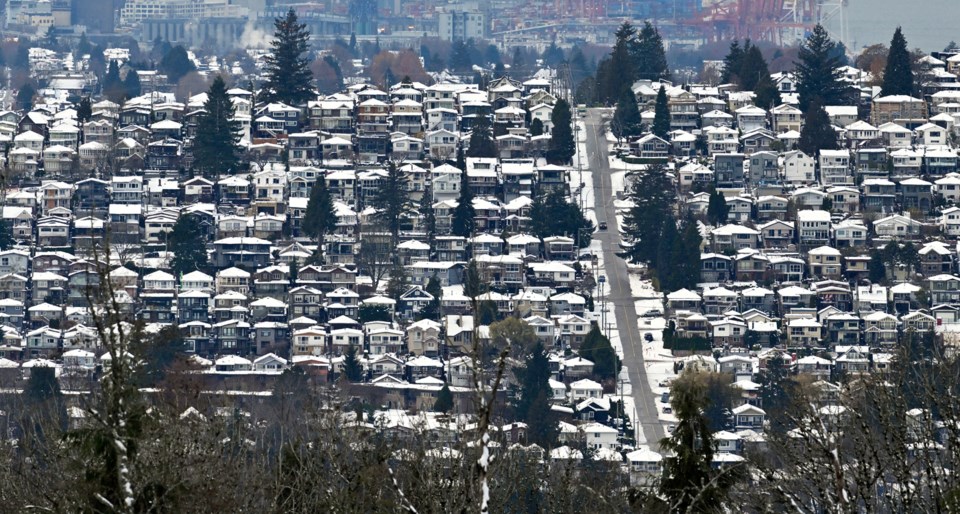As mortgage rates continue to increase, housing prices in Burnaby continue to trend downward.
The Real Estate Board of Greater Vancouver's (REBGV) December report said 28,903 homes were sold last year across the region, which marks a 34.3 per cent decrease from 2021 when there were 43,999 recorded sales.
Last year's numbers were also 13.4 per cent below the 10-year sales average.
Locally, a residential property in Burnaby East last month recorded a benchmark price of $1,082,300 (-2.3 per cent compared to November 2022), $965,300 in Burnaby North (-1.7 per cent) and $1,057,400 in Burnaby South (+0.2 per cent).
Single-family detached hit a benchmark price of $1,675,400 in Burnaby East (-5.1 per cent), $1,889,600 in Burnaby North (-1.7 per cent) and $2,038,900 in Burnaby South (+0.5 per cent).
Townhouse prices also dropped in two of the three REBGV Burnaby areas with Burnaby East at $854,000 (-0.3 per cent), Burnaby North at $860,800 (-0.1 per cent) and Burnaby South at $948,300 (+0.4 per cent).
"The headline story in our market in 2022 was all about inflation and the Bank of Canada's efforts to bring inflation back to target by rapidly raising the policy rate," REBGV director of economics and data analysis Andrew Lis said in a release.
"This is a story we expect to continue to make headlines into 2023, as inflationary pressures remain persistent across Canada.
"Closing out 2022, the data shows that the Bank of Canada’s decisions to increase the policy rate at seven of the eight interest rate announcement dates in 2022 has translated into downward pressure on home sale activity and, to a lesser extent, home prices in Metro Vancouver.
"While the consensus among many economists and forecasters suggests the Bank of Canada may be near the end of this tightening cycle, rates may remain elevated for longer than previously expected since the latest inflation figures aren’t showing signs of abating quickly."
Areas covered by the REBGV include Burnaby, Coquitlam, Maple Ridge, New Westminster, North Vancouver, Pitt Meadows, Port Coquitlam, Port Moody, Richmond, South Delta, Squamish, Sunshine Coast, Vancouver, West Vancouver and Whistler.


